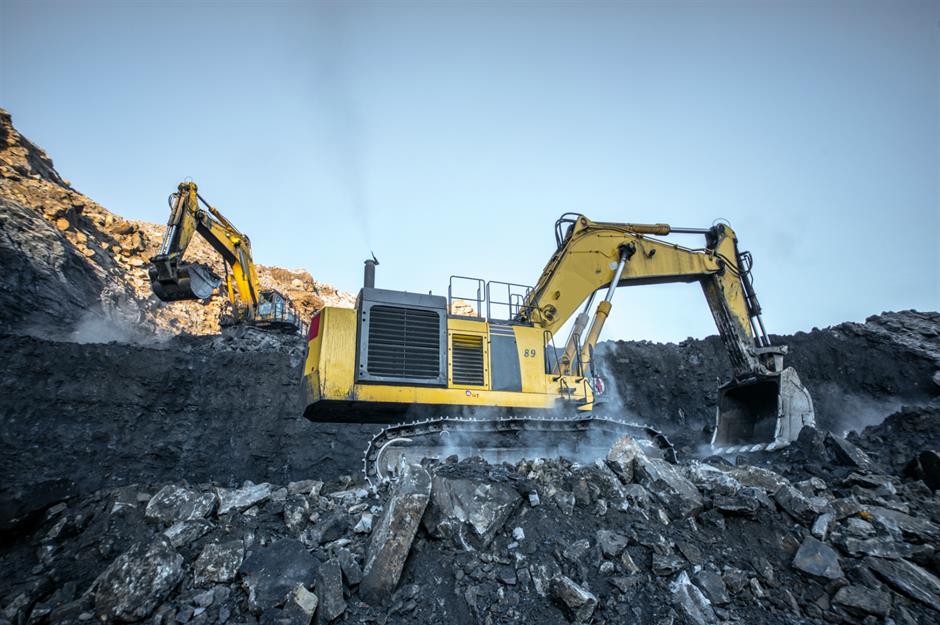When will the world’s natural resources run out?
How much of the world's natural resources are left?
Coal – 132 years
Primarily used as fuel to generate electric energy, coal has the largest reserves of any natural resource left. According to the World Coal Association, there are approximately 1.06 trillion tonnes still remaining. This gives us about 132 years before it runs out, down from 150 years in 2018.
The alternative? Geothermal
Natural gas – 52.8 years
The alternative? Nuclear power
Oil – 50.7 years
According to BP's Statistical Review of World Energy 2020, oil consumption fell to its lowest levels since 2011 as a result of the coronavirus pandemic. This meant supply was falling by a staggering 9.1 billion barrels per day. But although this fall in demand may have bought us a little more time – current estimates suggest we have 50.7 years of oil left, up from 50.2 in 2018 – we've still reached crisis point. We rely on oil not just to power our cars and vehicles, but also to make different plastics and synthetic materials.
Oil – 50.7 years
Despite this, the US is having a fracking boom. Hydraulic fracturing, known as fracking, uses water to extract oil and gas trapped in shale and other rock formations underground. According to the American Petroleum Institute (API), the fracking industry now supports 5.6% of US employment – but this comes at a serious price. By 2025, methane leakages during fracking could cost the US almost $30 billion (£21.9bn) a year in health damages, says the Natural Resources Defense Council (NRDC).
The alternative? Electricity
Electricity is becoming the most popular alternative fuel for vehicles that run on petrol or diesel. Electricity is most often produced by coal, which currently accounts for 37% of global production. By 2040, the International Energy Agency (IEA) expects this figure to fall to 22% as reliance on renewable energy sources such as solar and wind increase. But what about the plastic products that we need oil for?
The alternative? Starch-based polymers
Starch-based polymers or bioplastics have had a lot of attention as a potential solution to replacing plastic. Not only are products made from food waste, woodchips or vegetable fats completely biodegradable, but they're also much cheaper to produce than plastic. By 2025, European Bioplastics estimates the global bioplastics production capacity will increase to 2.87 million tonnes. This is a good start, but considering more than 368 million tonnes of plastic are produced a year, we've still got a long way to go.
The alternative? Lyocell
Phosphorus – 30-40 years
When we think about natural resources, most of us don't think about phosphorous, but without this crucial mineral we'd struggle to survive. Phosphorous is necessary for a range of biological processes, from growing plants to developing new bone cells. Unfortunately, our reliance on phosphate fertilisers in modern farming has led to overextraction of the element. Resarch by the Global Phosphorous Research Initiative predicts we'll run out of phosphorous in the next 30-40 years, posing a serious threat to our food production rates.
The alternative? Beef bone meal
Fresh water – 9-19 years
"There will be no water by 2040 if we keep doing what we're doing today." This is the harrowing prediction from Professor Benjamin Sovacool of Aarhus University, Denmark, and other forecasts aren't much brighter. According to the International Resource Panel, half the world's population could be living in areas that don't have enough water to go around by 2030. Fresh water only makes up 2.5% of the world's water, with the rest being undrinkable salt water. To add to the problem, 70% of fresh water is actually in the form of ice and permanent snow. It's not just drinking that we need fresh water for, but for washing and to produce food. High demand means we could soon run out. So what can we do?
The solution? Desalinating salt water
Desalination plants like this one in Hamburg might be the answer. Processes such as reverse osmosis (which filters out the salt) or distillation (which boils the water and collects the water vapour) are in use in the Middle East and Israel, with the latter actually getting 40% of its water from desalination. These processes aren't without their downsides though. Both are very costly, harmful to marine ecosystems, and take up a lot of energy. According to Energy Central, one desalination plant uses as much power as a jumbo jet.
The solution? Wastewater treatment
A greener alternative to desalination is wastewater treatment. By recycling wastewater and household sewage, we could drastically boost our reserves. The Shafdan Wastewater Treatment Facility in Israel, for example, supplies water to more than 50,000 acres of farmland a year. Over 40% of Israel's agricultural water needs are now met by wastewater, while methane in the remaining sewage waste is used to fuel renewable energy production.
Now take a look at the industries that will boom after COVID-19

